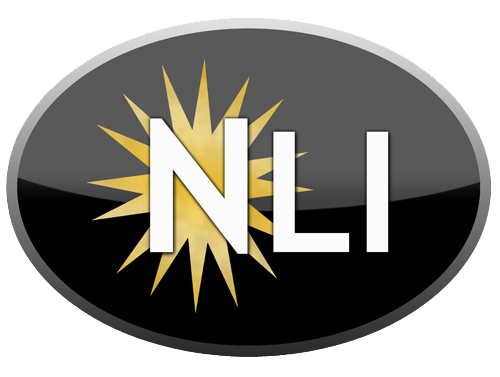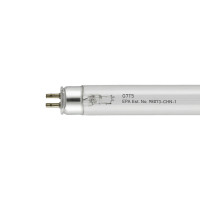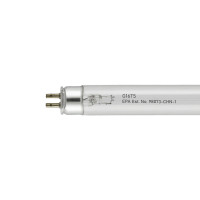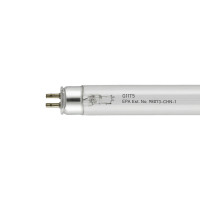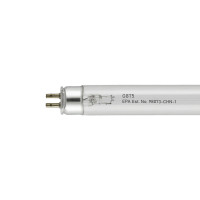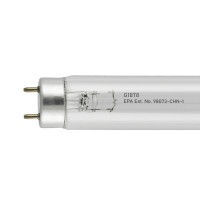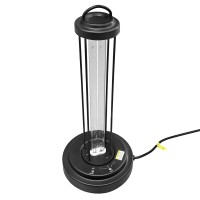Germicidal UV Tubes
Germicidal UV tubes utilize ultraviolet light in the UV-C spectrum (specifically 254 nanometer wavelength) to provide powerful disinfection and sterilization capabilities for air, water, and surface applications. Unlike visible light or the UV-A and UV-B wavelengths that reach Earth from the sun, UV-C light at 254nm possesses unique germicidal properties that destroy the DNA and RNA of microorganisms including bacteria, viruses, mold spores, and other pathogens, rendering them unable to reproduce and effectively eliminating their threat. This technology has been used for over a century in healthcare, water treatment, food processing, and HVAC systems, providing chemical-free disinfection that leaves no residue and creates no harmful byproducts. The COVID-19 pandemic dramatically increased awareness and adoption of UV-C germicidal technology as facilities sought proven, effective methods to reduce airborne and surface pathogens.
The germicidal effectiveness of UV-C light at 254nm wavelength is well-established through decades of scientific research and real-world applications. UV-C photons at this wavelength are absorbed by the DNA and RNA molecules within microorganisms, causing molecular damage that prevents replication. Bacteria, viruses, mold, and other pathogens exposed to sufficient UV-C dosage (measured as intensity × time) are rendered non-viable. The effectiveness depends on several factors: UV-C intensity at the target surface, exposure time, distance from the lamp, air or water flow rate (for moving applications), and the specific microorganism (different pathogens have different UV-C susceptibility). Published research documents UV-C effectiveness against a broad spectrum of pathogens including MRSA, E. coli, tuberculosis, influenza, coronaviruses, and many others. Properly designed UV-C systems can achieve 99%+ inactivation rates when dosage parameters are correctly specified.
HVAC system applications represent one of the most common uses for germicidal UV tubes, where they disinfect air passing through air handling units and prevent microbial growth on cooling coils and drain pans. UV-C lamps installed in the air stream disinfect moving air, reducing airborne transmission of pathogens and improving indoor air quality. UV-C lamps positioned to irradiate cooling coils prevent the mold and bacterial growth that commonly occurs on these wet surfaces, eliminating odors, maintaining heat transfer efficiency, and reducing maintenance. The continuous operation of UV-C lamps in HVAC systems provides ongoing disinfection without chemicals, filters to change (though UV works synergistically with filtration), or impact on air flow. Healthcare facilities, schools, offices, restaurants, and residential applications all benefit from HVAC UV-C integration. Proper lamp sizing and placement are critical—professional HVAC UV system design considers air velocity, duct dimensions, lamp output, and target organisms to achieve effective disinfection.
Water treatment and purification systems use germicidal UV tubes to disinfect drinking water, process water, and wastewater without chemicals. UV-C water treatment systems flow water past UV lamps in specially designed chambers, exposing the water to germicidal UV dosage sufficient to inactivate bacteria, viruses, and protozoan cysts including Giardia and Cryptosporidium that are resistant to chlorine. UV water treatment produces no taste or odor, creates no harmful disinfection byproducts (unlike chlorination), and operates continuously with minimal maintenance beyond annual lamp replacement. Municipal water systems, well water systems, aquariums, ponds, food and beverage processing, pharmaceutical manufacturing, and countless other applications rely on UV-C water disinfection. The effectiveness depends on water clarity (turbidity blocks UV transmission), flow rate, and proper system design ensuring adequate UV dosage.
Upper-room UV-C systems provide air disinfection in occupied spaces by installing germicidal UV fixtures high on walls or suspended from ceilings, creating a disinfection zone in the upper portion of rooms while shielding occupants from direct UV-C exposure. Air circulation (natural convection or mechanical ventilation) moves room air through the UV-C zone where pathogens are inactivated before the air returns to the occupied zone. This technology is particularly valuable in healthcare settings (TB control, isolation rooms, emergency departments), schools, offices, and public spaces where airborne pathogen transmission poses risks. Properly designed upper-room UV systems can provide continuous air disinfection equivalent to many air changes per hour, supplementing HVAC filtration and ventilation. Installation requires careful attention to lamp placement, shielding, room geometry, and air circulation patterns to achieve effective disinfection while ensuring occupant safety.
Surface disinfection applications use germicidal UV-C for equipment sterilization, room decontamination, and continuous surface treatment. Mobile UV-C robots and portable fixtures disinfect hospital rooms, operating suites, ambulances, and other spaces between uses, providing high-level disinfection that supplements manual cleaning. These systems use high-output UV-C lamps and operate in unoccupied spaces due to the intense UV exposure. Laboratory biosafety cabinets use UV-C lamps for work surface disinfection between uses. Food processing equipment, pharmaceutical manufacturing surfaces, and other critical applications employ UV-C for chemical-free surface disinfection. Conveyor UV systems continuously disinfect products, packaging, and materials in production environments. The key consideration is ensuring adequate UV-C dosage reaches all target surfaces—shadows and blocked areas receive no disinfection, so line-of-sight from lamp to surface is essential.
Germicidal UV tube types include low-pressure mercury vapor lamps (the most common), producing primarily 254nm UV-C output with high germicidal efficiency. These tubes look similar to fluorescent lamps but use special quartz glass that transmits UV-C (standard glass blocks UV-C) and contain no phosphor coating. Common germicidal tube types include T8 straight tubes in 2-foot, 3-foot, and 4-foot lengths, compact U-shaped tubes, and specialty configurations. Wattages typically range from 15 to 95 watts for common sizes, with higher wattages producing proportionally more UV-C output. The tubes operate on standard ballasts but require UV-transmitting fixtures—standard fluorescent fixtures with standard glass or plastic diffusers block the UV-C and render the system ineffective. Germicidal UV fixtures use open designs or quartz/special plastic that transmits UV-C.
UV-C lamp output degrades over time as the mercury vapor and electrode materials age, reducing germicidal effectiveness even though the lamp continues to produce visible light. Most germicidal UV lamps are rated for approximately 9,000-17,000 hours of effective UV-C output, depending on lamp type and operating conditions. After this period, UV-C output has typically declined 20-30% below initial levels, reducing disinfection effectiveness below design parameters. Scheduled lamp replacement based on operating hours is essential—continuing to operate old lamps provides false confidence while delivering inadequate disinfection. Many UV systems include hour meters or lamp monitoring systems to track usage and indicate when replacement is needed. The annual lamp replacement cost is the primary ongoing expense for UV germicidal systems, offset by the elimination of chemical disinfectants and related costs.
Installation and system design considerations are critical for effective germicidal UV applications. Proper UV dosage calculation requires understanding lamp output (UV-C intensity at specified distance), exposure time or air/water flow rate, target pathogens and required inactivation rate, and environmental factors affecting performance. Professional UV system design uses published guidelines from organizations like ASHRAE (for HVAC applications), NSF (for water treatment), and CDC (for healthcare applications) to ensure systems achieve intended disinfection goals. Improper sizing, placement, or configuration can result in systems that provide inadequate disinfection while creating false confidence. For critical applications like healthcare and water treatment, professional engineering and proper commissioning are essential investments.
UV-C safety is paramount because germicidal UV light exposure causes serious eye and skin damage with even brief direct exposure. UV-C is far more damaging than the UV-A and UV-B in sunlight—minutes of direct exposure can cause severe eye inflammation (photokeratitis) similar to welder's flash, and repeated exposure increases skin cancer risk. Germicidal UV fixtures must be installed and operated with proper safety controls including shielding to prevent occupant exposure, interlocks that disable lamps when access panels open, and warning labels. Upper-room systems require careful design to prevent UV leakage into occupied zones. Mobile UV disinfection units must have motion sensors, timers, and safety features preventing operation when people are present. Maintenance personnel working near UV lamps must use proper eye protection and minimize exposure. The powerful disinfection capability that makes UV-C valuable also demands respect and proper safety protocols.
Ozone-producing versus ozone-free UV lamps represent an important distinction. Standard low-pressure mercury germicidal lamps produce some 185nm wavelength in addition to 254nm UV-C. The 185nm photons interact with oxygen to create ozone, which has its own disinfecting properties but also has strict exposure limits and can damage materials. Many applications require ozone-free UV lamps using special quartz glass (doped quartz) that blocks 185nm transmission while passing 254nm, eliminating ozone production. HVAC applications typically require ozone-free lamps to prevent ozone accumulation in occupied spaces. Water treatment applications may use standard or ozone-free lamps depending on design. Always verify whether your application requires ozone-free lamps and order the appropriate type—the lamps look identical but perform differently.
Common Applications: HVAC air disinfection and coil treatment, water purification and treatment systems, healthcare environmental disinfection, upper-room air disinfection, laboratory biosafety cabinets, food and beverage processing, pharmaceutical manufacturing, surface and equipment sterilization, anywhere effective germicidal disinfection is required
Key Considerations: Proper system design for adequate UV dosage, scheduled lamp replacement based on hours, UV-transmitting fixtures required, ozone-free vs. standard lamps, professional installation for critical applications, regular maintenance and monitoring
⚠️ IMPORTANT SAFETY WARNING: Germicidal UV lamps emit harmful ultraviolet light that can cause serious eye injury and skin damage. NEVER look directly at an operating UV germicidal lamp. NEVER expose unprotected eyes or skin to UV germicidal light. Proper use of shielded fixtures with appropriate safety controls is absolutely essential for safe operation. UV germicidal lamps must ONLY be used in properly designed systems with adequate safety measures to prevent human exposure. Consult qualified professionals for UV system design, installation, and safety compliance.
G7T5 7-Watt Germicidal Tube
Wattage: 7W, Type: T5 Germicidal UV Bulb, Length: 7.00 in., Base Type: Miniature bi-pin, Life..
Item Discontinued
G16T5 16-Watt Germicidal Tube
Wattage: 16W, Type: T5 Germicidal UV Bulb, Length: 12.0 in., Base Type: Miniature bi-pin, Life..
$24.95
G11T5 11-Watt Germicidal Tube
Wattage: 11W, Type: T5 Germicidal UV Bulb, Length: 9.0 in., Base Type: Miniature bi-pin, Life..
$14.75
G8T5 8-Watt Germicidal Tube
Wattage: 8W, Type: T5 Germicidal UV Bulb, Length: 12.0 in., Base Type: Miniature bi-pin, Life..
$16.95
G18T8 18-Watt Germicidal Tube
Wattage: 18W, Type: T8 Germicidal UV Bulb, Length: 24.0 in., Base Type: G13 (medium bi-pin), Life..
$24.95
UV36H UVC Fixture With Timer
Voltage: 120V, Wattage: 36W, Type: UVC Fixture, Is It Dimmable? No, Features: Timer using remote..
$45.95
